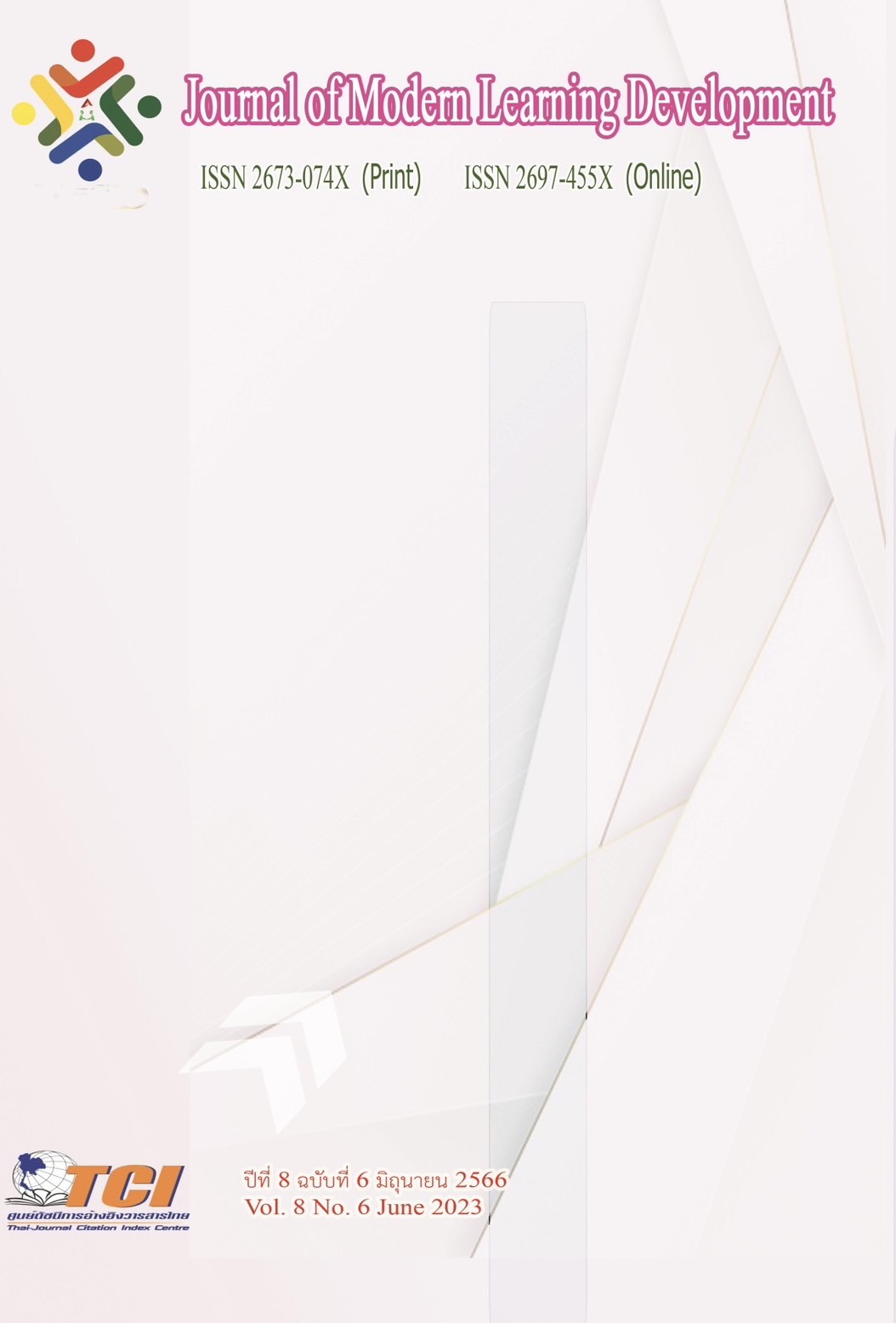The Development of Community Participatory Solid Waste Management Model : Case Study, Moo 8, Nongnak Subdistrict Administrative Organization, Nong Khae District, Saraburi Province
Main Article Content
Abstract
Participatory action research (PAR) describes this study. To research the state of trash management in the neighborhood, as well as news perception, behavior, and public participation, and to create a model for public involvement in neighborhood solid waste management. Case study: Nong Khae District, Saraburi Province, Village No. 8, Nong Nak Subdistrict. comprised of four phases: 1) Researched the community's solid waste management condition. 2) Creation of a model for collaborative solid waste management 3) Introducing a community-based participatory solid waste management model 4) Assess the effects of the procedure. Utilising questionnaires, interview forms, and interactive workshops, data was gathered. Descriptive statistics and content analysis were both used in the analysis. According to the findings, the community process for managing solid waste in communities consists of the following: 1. Plans and regulations for the solid waste management project have been released as part of the context process by the subdistrict administrative organisation, allowing the public to comment on the development plan proposal. 2. Input procedure: The SAO supports the creation of budgets, study trips, and tanks for organic waste. 3. The manner in which the Board of Directors operates Subdistrict leaders, a clean house competition, and leaders in each region will enhance the quality of life there. 4. Keeping track of the volume of solid waste. Solid waste recycling takes place in activities in which individuals take part. Found A total of 76.92% of the civic and local officials were informed. Village waste management by SAO: 58.46% Local leaders endorse, inspire, encourage, and collaborate. 83.08% zero waste. Solid waste management participation was rather moderate . There are four steps in the community-participatory solid waste management concept. 1. Adopted by the quality-of-life development committee at the subdistrict level. 2. Foster the leadership potential of village members. 3. Take part in the creation of the village's solid waste sorting rules and agreements. 4. Establish joint objectives to cut waste. After the procedure, it was discovered that there was less waste in the neighborhood. The public should be informed and encouraged to get involved in project development and community activities by local government organisations, according to several suggestions.
Article Details
References
กรมควบคุมมลพิษ. (2558). คู่มือประชาชน การคัดแยกมูลฝอยอย่างถูกวิธีและเพิ่มมูลค่า. กรุงเทพมหานคร: บริษัท ฮีซ์ จำกัด
กรมควบคุมมลพิษ. (2559). แผนแม่บทการจัดการขยะมูลฝอยของประเทศ. พ.ศ.2559-2564 กรุงเทพมหานคร:
กรมควบคุมมลพิษ. (2561). รายงานสถานการณ์มลพิษแห่งประเทศไทย. กรุงเทพมหานคร: บริษัท ฮีซ์ จำกัด
กรมควบคุมมลพิษ. (2562). รายงานสถานการณ์มลพิษแห่งประเทศไทย. กรุงเทพมหานคร: บริษัท ฮีซ์ จำกัด
จำลอง โพธิ์บุญ. (2560). การประเมินด้านสิ่งแวดล้อม. กรุงเทพมหานคร: ออลอินวัน พริ้นติ้ง.
ดวงสมร ฟักสังข์. (2555). หลักปรัชญาเศรษฐกิจพอเพียงกับการจัดการขยะมูลฝอยของครัวเรือนในชุมชนเขตดุสิตของกรุงเทพมหานคร. รายงานการวิจัย. บัณฑิตวิทยาลัย: มหาวิทยาลัยราชภัฏสวนสุนันทา.
เชาวลิต อยู่เกิด, วิจิตรา ศรีสอน และ ศิโรตม์ ภาคสุวรรณ. (2564). การมีส่วนร่วมของชุมชนในการจัดการแบบยั่งยืน: กรณีศึกษารูปแบบการจัดการขยะชุมชนตลาดสดแฮปปี้แลนด์ใหม่เขตบึงกุ่มกรุงเทพมหานคร. Journal of Multidisciplinary in HumanitiesAnd Social Sciences. (2), 712-726.
บัญชา สุวรรณสิทธ์. (2550). การจัดการขยะมูลฝอย ณ แหล่งกำเนิดของเทศบาลตำบลสันทราย อำเภอสันทรายจังหวัดเชียงใหม่. ปริญญานิพนธ์ รป.ม. บัณฑิตวิทยาลัย: มหาวิทยาลัยเชียงใหม่.
สุภัชญา สุนันต๊ะ. (2561). องค์กรปกครองส่วนท้องถิ่นกับบทบาทการสร้างเสริมสุขภาพชุมชน. วารสารกฎหมายสุขภาพและสาธารณสุข. 4 (1), 98-107.


